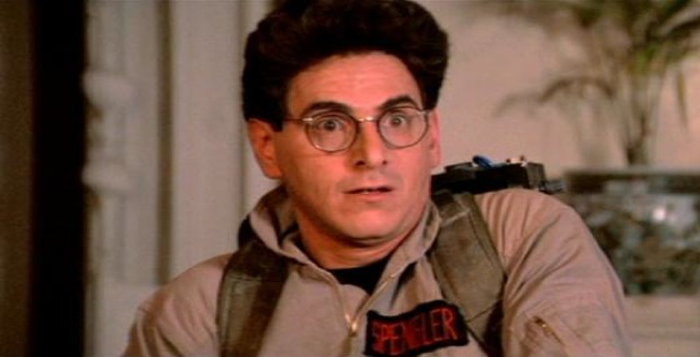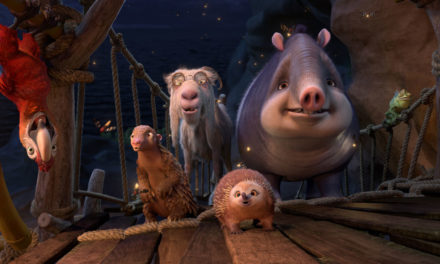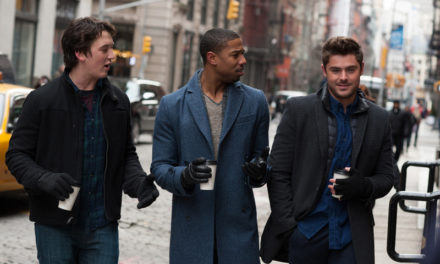Closely identified with the humor of the Harvard Lampoon and its progeny, National Lampoon, as well as that of “Saturday Night Live” (SNL), the humor of Harold Ramis, who passed away on Feb. 24, was a well-tempered, sensible compromise of that humor with universal appeal. Ramis co-wrote National Lampoon‘s “Animal House” and “Vacation” – probably the reason for his identification with “Nat Lamp” – and, in the same genre, “Caddyshack,” “Stripes,” “Ghostbusters,” “Back to School” and “Groundhog Day,” among others.
And Ramis was part of Second City, the Chicago comedy group that spawned SNL’s John Belushi, Dan Aykroyd, Bill Murray and Gilda Radner as well as the National Lampoon Comedy Hour on radio and National Lampoon‘s Lemmings in the theater. But unlike National Lampoon, Second City and “SNL,” Ramis never sought to “burn down” the house of American politics and society. He chose to “bring down the house” with his challenging yet sensible wit reminiscent of Mark Twain.
Comedy can be an art of crowning glory. As the social and political upheaval of the 1960s peaked into the year 1970, National Lampoon magazine was founded by three Harvard graduates who had written for and managed the college’s humor magazine, Harvard Lampoon.
Perfectly in tune with the social and political climate of 1970, National Lampoon magazine exploded in popularity. One cover of the magazine cartooned U.S. Army Lt. William Calley, court-marshalled for ordering the mass murder of the Vietnam village of My Lai. Caricatured to look like Mad magazine’s grinning icon, Alfred E. Neuman, whose signature phrase was, “What, me lie?” The caption read, “What, My Lai?”
In 1974, the Beatles’ George Harrison released an album whose cover depicted a child with a potbelly due to the physiological forces of starvation. The Lampoon cover portrayed the starving child as a chocolate sculpture – for Americans to eat – with a bite taken out of his head.
The Lampoon didn’t hesitate to present a cover depicting a dog, worriedly viewing a revolver pressed to its head, with the caption, “If You Don’t Buy This Magazine, We’ll Kill This Dog.” This was comedy of anarchy – no limits, no rules.
But Ramis’ humor was a special kind of anarchy, driven by mutiny, by Nietzsche’s slave morality, but tempered by the fact that it was carried out by nerds, underdogs and misfits. Ramis had the derelict Delta party-boys rebel against the rich, trust fund elitist Omegas in “Animal House,” the caddies and loud nouveau riche against the WASPs of Bushwood Country Club in “Caddyshack.” In “Stripes,” the foolhardy Ox (Murray) and Winger (Ramis) save their platoon through their rejection of their incompetent commanding officer.
Finally, in “Ghostbusters,” the eccentric para-psychologists Venkman (Murray), Stantz (Aykroyd) and Spengler (Ramis), dismissed from their research positions at Columbia, are the only hope to save New Yorkers when the city is overrun by ghosts and Gozer, the Sumerian god of destruction. One can’t help saying it: “Who ya gonna call?”
Ramis’ humor showed the problems with the various hierarchies in the U.S. and gave hope to the misfits and outcasts.
And in 1993, Ramis looked to the other side, showing the aesthete develop into a genuine person with an almost fairy tale plot of a TV weatherman who wakes up in Punxsutawney, Pa. on Feb. 2. Then, stuck in a time-warp, does so again and again every day, until he learns to make every minute of every day perfect. “Groundhog Day” gave new meaning to that word, “perfect.”
I’m not asserting that with the loss of Ramis we have lost a great philosopher of our time. We have, however, lost a man who brought us the humorous underdog stories, who advocated for the everyday man and stood unswayed by social pressures.
“Ghostbusters 3,” rumored to be in pre-production, may or may not happen now, but Ramis’ contributions, his critiques and the hope he gave the hopeless will live on.
– By Zak Hudak
The Emory Wheel was founded in 1919 and is currently the only independent, student-run newspaper of Emory University. The Wheel publishes weekly on Wednesdays during the academic year, except during University holidays and scheduled publication intermissions.
The Wheel is financially and editorially independent from the University. All of its content is generated by the Wheel’s more than 100 student staff members and contributing writers, and its printing costs are covered by profits from self-generated advertising sales.






